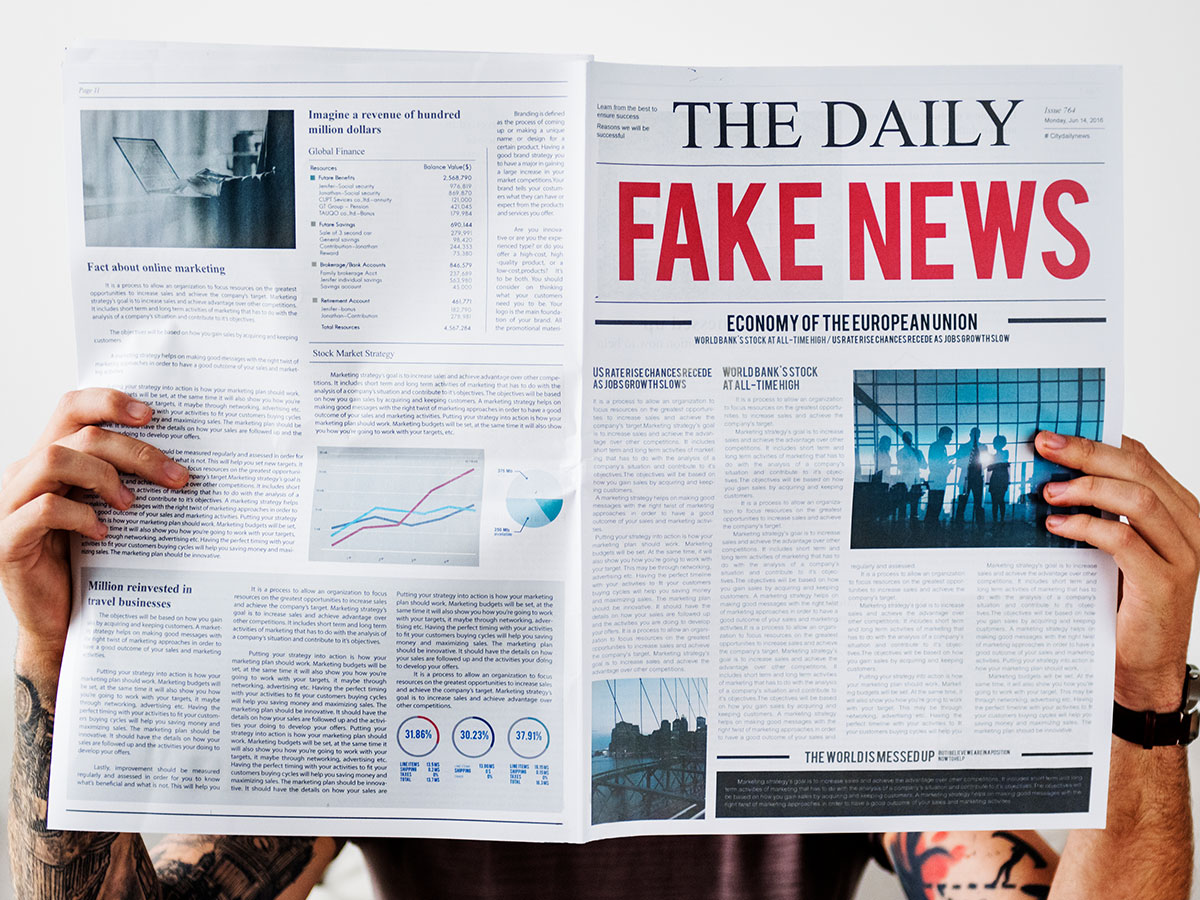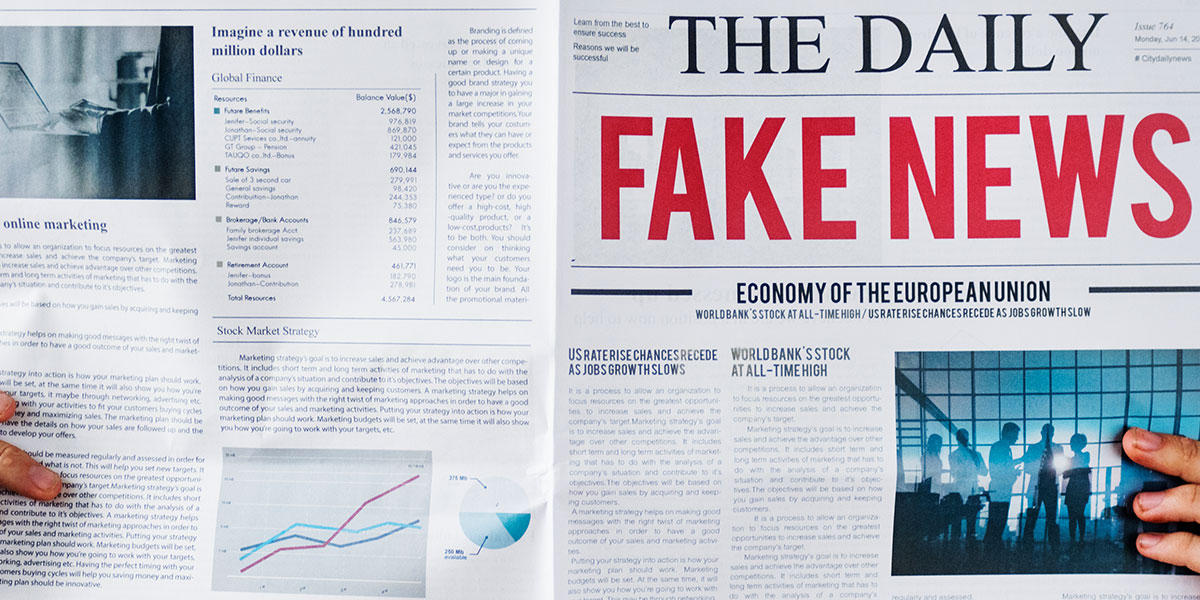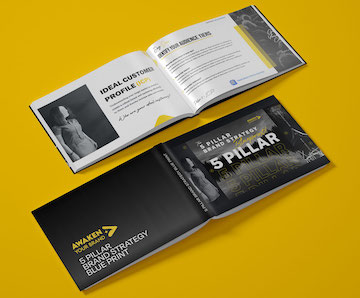So far in this series on the power of sale and lead generation funnels, we started with how to master the sales funnel, followed by how to build a funnel that converts, optimizing the funnel with CTAs, creating the perfect landing page, and how to use surveys in sales funnels.
In this post, we’ll continue our exploration of the more abstract aspects of funnel optimization. Specifically, we’ll look at the headline: what it is, and why it matters. You may not have given much thought to headlines in the past, but as we’ll see, they play a major role in determining how many people you get to your landing pages. As you know, every eyeball counts.
In this concise post, you’ll learn:
- What a headline really is
- Why well-written headlines are a crucial part of a healthy funnel
- The first, crucial steps for writing stellar headlines
- How to write headlines with the modern consumer in mind
Last, but certainly not least, you’ll learn nine tried-and-true headline formats that will spur people to read and share your content.
Ready?
Let’s do this.
What is a Headline?
An old bit of marketing wisdom goes something like this:
For every one person who reads your article, five other people only read the headline.
People are willing to read headlines, but they’re not necessarily willing to read more than that. Therefore, you should put quite a bit of effort into your headline to maximize the chance that people will read your content. Think of your headline as the all-important first impression. If you make a great first impression, you stand a better chance of getting the person to read on.
Remember: with so much content out there, you’re competing with other brands constantly. Time is a finite resource, after all. Recent research suggests that most consumers spend only 15 seconds on a given article.
The good news is that you can improve your time on-site stat by writing effective headlines. In fact, there’s a science to headline writing, and once you get the knack, you’ll be able to do it over and over again. Don’t worry, I’ll spill the beans in this post.
For now, let’s answer a fundamental question:
What exactly is a headline, and how do headlines relate to funnels?
A headline is a promise.
Your headline should tell the reader what they stand to gain by reading the article or blog post. At the same time, it should summarize the content. This is, of course, similar in concept to the call to action, which we covered in an earlier post.
To summarize, your headline should:
- Make a promise. What does the reader stand to gain? The promise should allude to the benefit. The benefit can be explicit or implied, but explicit is usually best.
- Summarize the topic. What is the article or blog post about?
With that in mind, it becomes quite clear why stellar headlines are so important to your funnel operations. Without strong headlines, your landing pages won’t be effective. Without effective landing pages, your funnel will suffer.
So let’s dive right into how to write these things, shall we?
Writing Good Headlines: First Steps
The first step of writing a powerful headline: always start with a working title.
Think of a working title as an internal version—a version of the headline that’s just for you. The end-user will never read it. It’s just there to help you focus. It’s there to help you meet the second condition of a headline; it ensures that you’re summarizing your topic. It’s not meant to be sexy.
Let’s say you’re trying to sell a lawnmower, and you’re creating an article for content marketing purposes. Your first step would be to identify your topic and to create an internal headline.
So let’s say you’re writing about riding lawn mower maintenance.
Your internal headline might be:
Riding Lawn Mower Maintenance Best Practices
Of course, the headline you ultimately create will be completely different. Why? Because the internal headline above is missing the other critical component of a good headline: the promise.
There’s no benefit.
This headline might entice someone who was already looking for that specific information, but it won’t rope in casual readers—and you need those casual readers. Think of the buyer’s journey. Remember, you’re competing with other brands for consumer attention.
Just to complete the example, the consumer-facing headline you ultimately end up with might look something like this:
Add 30 Years to Your Lawn Mower’s Life with These Maintenance Tips
It’s a bit long, but it’s also much more compelling. It’s a lot sexier because it’s making a promise to the reader.
More on the promise in the next section.
Topic vs Headline
Before we move on to more specific strategies, it’s important to touch on topics. Many novice content marketers make the mistake of confusing general topics with titles. For instance, lawn care is a topic. Titles are specific. You can make several articles on the topic of lawn care logo design, but every article needs its own title—or headline—and that title should promise a specific benefit.
If you find yourself coming up with headlines like Top 10 Lawn Care Tips, it’s likely that your article is too broad, or generic. Modern consumers don’t hang around for generic articles. Every piece of content you create should promise a specific benefit to the reader, and it should deliver.
Length
You may have heard elsewhere that a headline should be as short as possible. This is incorrect. There’s nothing wrong with a long headline as long as it conveys the information you need it to convey. What you want to do, though, is make sure that your headline contains as many words as it needs to but no more than that.
That is to say if you can cut a word from your headline without changing its meaning, do so.
If you can use one word instead of using two, do that. Put another way, if you have redundancies in your headline, remove them.
Now let’s set the stage for headline awesomeness by discussing the modern consumer.
The Power of Headline Formulas
In many aspects of content creation, relying on formulas can be a weakness. Not here. With headlines, you want to stick with proven formats. After all, if master copywriters have already done the heavy lifting for us, why should we try to reinvent the wheel?
Your job, once you know these formats, is to decide which best suits the piece of content you’re working on right now.
What’s more, by sticking to these formats, you give yourself an advantage over your competitors who are just writing whatever strikes their fancy. You’ll enjoy more consistent results, and this consistency will allow you to outperform them. This is just one more way to optimize your funnel, and as you know, funnel optimization leads to higher revenues.
Let’s dive in.
#1 The Direct Approach
The first format is a simple, direct route. It’s not about being clever, nor is it about being funny. This headline format respects the consumer’s time as it gets straight to the point.
Examples
Save 30% with This Tax Shelter
Build Your Audience 50% Faster with Native Advertising
Double Your Audience with Devastatingly Effective Headlines
#2 Put a Spotlight on the Benefit
The second format is a bit more aggressive and salesy. It puts a big spotlight on the benefit to grab the reader’s attention. These headlines can be effective. But it’s vital that you honor the promise you make. If you don’t, you’ll gain a reputation as a publisher of clickbait articles. More on that in a moment.
Examples
Now! Earn Six Figures with Drop Shipping
Create Killer Content in Minutes!
Today: Get Free Content with Guest Posts
Note the use of exclamation points and colons to highlight, or frame, the benefit. These framing elements make the headline more aggressive.
#3 News
People are conditioned to respond to the news, and no matter how busy we get, this is unlikely to change. But like the spotlight technique, this is one you won’t want to overdo. If you only use news headlines, your regular readers will start to tune out. That said, news headlines can be extremely effective.
Examples
Researchers Discover Brain Area That Prompts Consumers to Spend More
The Wait Is Over: Key to Earning Repeat Business Discovered
Recent Discovery: Audio Content Twice as Memorable as Written Content
Note that with news headlines, it’s okay to imply the benefit instead of outright stating it. In fact, that’s part of the news headline’s appeal. The reader knows they’ll have to read the content to find out what it’s all about, and they’re okay with that. This is because, again, they’ve been conditioned to consume news media.
#4 The How-To
The how-to needs no introduction. It’s a straightforward format. The danger here, as with many of these, is in its overuse. If you rely on the how-to, your readers will come to think of you as a how-to site. The issue is that when you then release other types of content, consumers may disregard it because it’s not the type of content they expect you to produce.
Examples
How to Write Content That People Will Read and Share
How to Build Powerful Funnels That Drive Sales on Auto-Pilot
How to Guarantee Your Riding Lawn Mower Lasts 50 Years
#5 The Question
The question format is quite powerful. It instantly converts the reader from a passive observer into an active participant. However, you can’t ask any ol’ question. Your question must relate directly to the benefit of the product. Or, if you’re writing an article or blog post for content marketing purposes, the question must relate directly to the thing they stand to gain by reading.
Examples
Do You Make These 6 Common Content Creation Mistakes?
Bounce Rate Too High? Read This to Optimize
How Do I Know Which Types of Content Will Drive Traffic?
Additionally, in order for the question format to be effective, it must appeal to the target audience. This may seem obvious, but it’s easy to get wrong. To go back to our lawn care example, if you know that most of your readers come to you for tips about lawn mower maintenance, don’t pose a question about, say, mulch—even if the article itself is about mulch.
So, for instance, you would use a headline like this:
Does Bagging Your Clippings Lower Lawn Mower Life?
Not something like:
Is Collecting Lawn Mower Clippings Good for the Environment?
Always pose your questions for maximum effect. That means thinking about who comes to your site, what they want to learn, and what they care about.
#6 The Command
The command format is essentially a CTA, and it can be brutally effective. This headline gives you license to be direct. You can be upfront about what you want the reader to do, but remember the cardinal rule: always highlight the benefit, and always deliver.
Examples
Click Here to Earn Your First 100,000 Subscribers on YouTube in One Year
Learn How to Call Anyone, Anywhere for Free!
Stop Wasting Money on PLR—Learn How to Create Your Own Content
#7 Useful or Exclusive Information
The useful or exclusive information format is how you can, over time, set yourself up as an authority in your niche. Are you an expert in your field? What do you know about your field that others don’t? You can use this format as your cornerstone go-to. That is to say, perhaps every 5 to 10 posts can be a long-form useful/exclusive information post.
If you deliver the goods consistently, and on a regular schedule, you’ll get more traffic than you know what to do with.
Examples
What Everyone Gets Wrong About Tax Shelters
Your Nutritionist is Wrong: 20 Must-Know Facts About Natural Life Extension
I Spill the Beans: The 20 Best Kept Secrets in Forex Trading
Note that this is another format where you can be a bit more subtle about the benefit. This is because you’re presenting yourself as an authority, so the reader will assume that you’re going to share more information in the article.
#8 The Testimonial
The testimonial format allows you to tap into the incredible power of social proof. However, for best results, use it sparingly. If you overuse it, it will lose its impact.
Examples
What Architects Have to Say: The Best Design Software Ever Released
The Diet Program That Actually Worked for 113 Struggling Women
Reviews Are In: The First Book on Finance That Turns Sense into Dollars
#9 The Every Man
The everyman format is a powerful headline technique because it grabs the reader’s attention, implies social proof, and gives the reader someone they can relate to, all at once.
Examples
Ohio Man Loses 50 Pounds in Three Months on Ketogenic Diet
Frustrated Homemaker Invents a Device to Effortlessly Clean Most Surfaces
Small Company’s SaaS Solution Doubles Their Revenue in Three Months: How to Replicate
Note the terms in each headline that make them relatable:
- Ohio man
- Frustrated homemaker
- Small company
That’s what the everyman format is all about—you want the reader to think, Hey, that’s me! The rest of the headline should get them to think, I could obtain the same benefit. I should read this.
Note: here again, you’ll want to be careful that the copy on the page or the content in the post delivers on the promise. Otherwise, you’ve created clickbait.
What is Clickbait?
A clickbait headline makes a promise that the subsequent content fails to keep. If you want to make a go of content marketing, the last thing you want to do is publish clickbait. There are a few practical reasons for this:
- People won’t subscribe to your newsletter if you publish clickbait
- People won’t share your articles or posts if you publish clickbait
- People won’t return to your site if you publish clickbait
If you create clickbait content, people might even unsubscribe from you altogether. Or they might drag you into their Gmail “Promotions” tab. Yikes.
Warning: consistently publishing clickbait will harm your brand.
The bottom line: Don’t make promises you can’t keep.
However, consumers expect headlines to be salesy. Salesy is fine. But if you can’t, for instance, teach them how to gain 100,000 real YouTube followers in 12 months, don’t tell them you can.
Publishing clickbait content is especially harmful if your goal is to become an authority in your niche. The inverse of clickbait, headlines that deliver on what they promise, makes it much more likely that your readers will share your posts on social media. This social activity is precisely what you need if you want to be seen as an authority.
Power Words
Speaking of salesy, there’s another aspect of headlines you should be aware of power words. These are words that spur a reader to take action, and you should use at least one in each headline. Below is a list of examples, but you can find a longer list here.
- Free
- Sale
- Focus
- Wanted
- Lifetime
- Challenge
- Tested
- Expert
- Advice
- Hurry
- Surging
- Wonderful
- Revisited
- Daring
- Pioneering
What do these words have in common? They build intrigue. They make the reader curious to find out more. A headline lacking powerful words is a dull headline.
Summary
A strong headline will make your landing pages strong, which in turn will make your funnel string. A gripping headline:
- Contains as many words as it needs, but no more than that
- Contains at least one power word
- Makes a promise
- Makes it clear what the reader stands to gain from reading—the benefit
Remember: always start with an internal headline—a first draft headline that only you will see. This will help you focus your article, blog post or landing page. Then write a consumer-facing headline once you’ve written the content.
As you gain experience writing headlines, you’ll crank them out faster. But for now, keep in mind that you should spend a good amount of time on your headline. After all, it’s the first thing your readers will see, and it plays an enormous role in determining how many eyeballs you attract to the page.
In our next post, we’ll take a step back from headlines and share our best tips and tricks for writing gripping content. While it’s generally best to have your content written by a professional whenever possible, knowing how to create content on your own when you have to is invaluable.
After reading our next post, you’ll be able to shore up any weak content within your funnel, thereby further optimizing it. Stay tuned!





